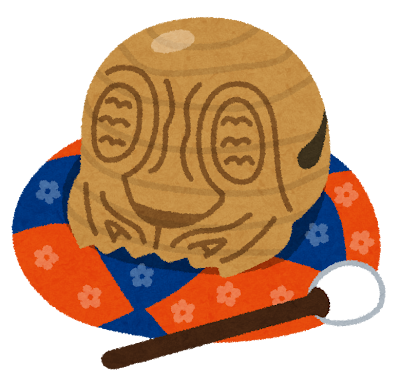Hello! It’s the blog, How Unique Japan! We always share any features in Japan through this site.
So, what comes today?
This time, we would like to discuss the equipment for one of the main religions in Japan, Buddhism. There are various tools for each religion around the world. So, Buddhism is not an exception.
In Particular, Mokugyo, a wooden fish with a direct translation, is a unique item because it also works as musical equipment.
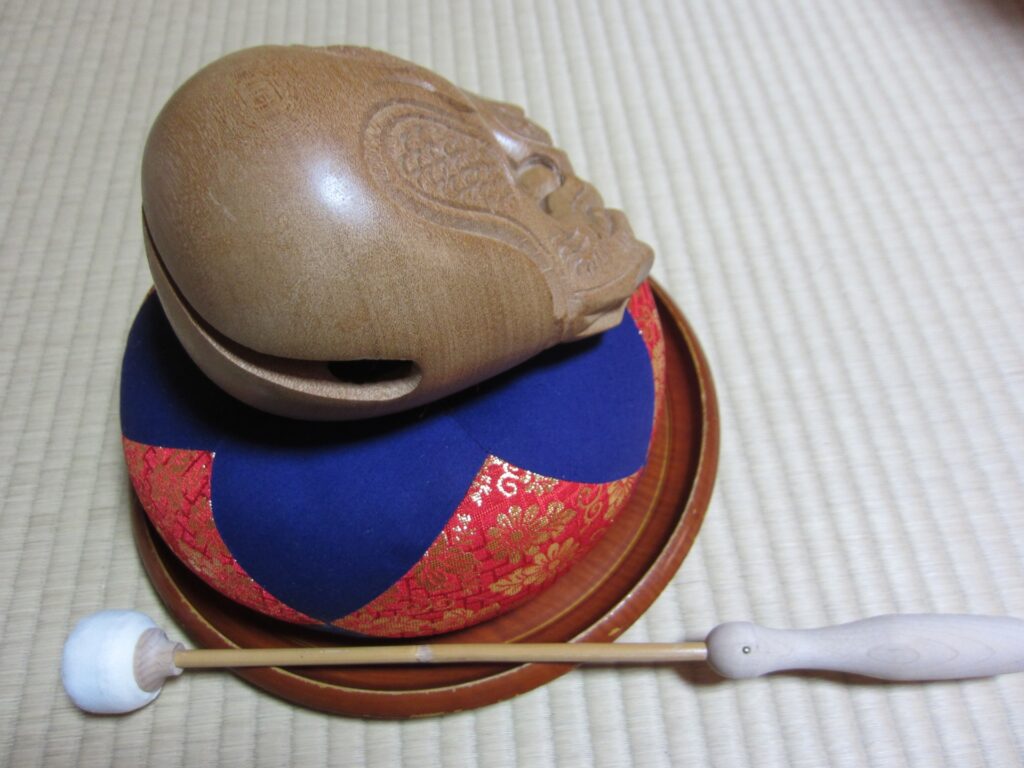
If you are familiar with Japanese funerals, you may notice a Buddhist monk chanting sutras in a droning voice and striking a ceremonial object.
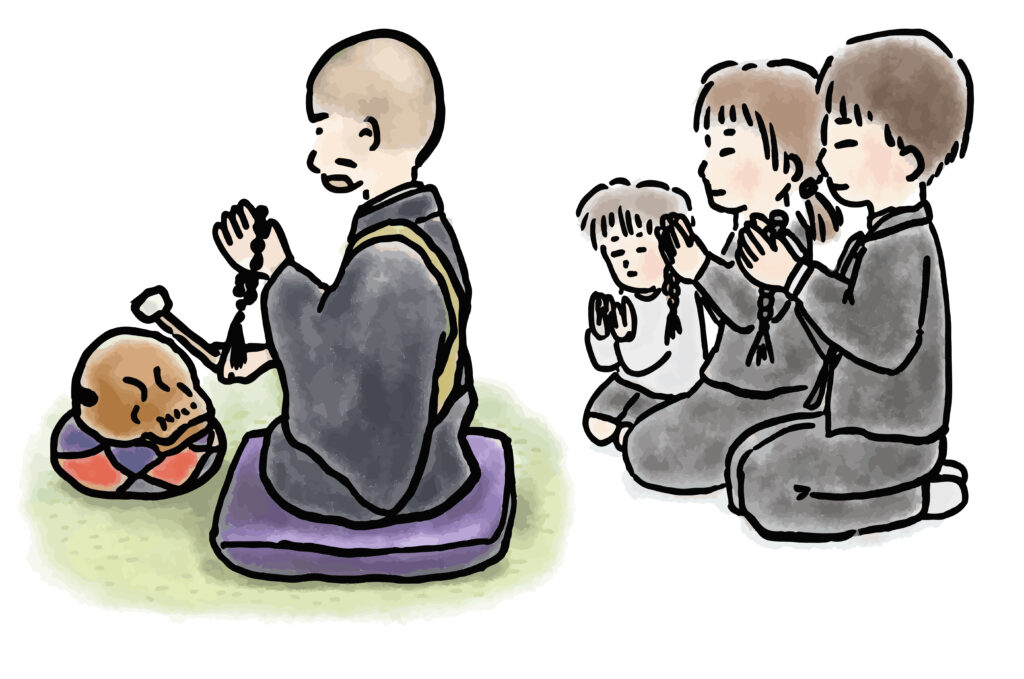
The monks always use the wooden and round-shaped object as a small drum for ceremonies (chanting sutra) with a stick covered with a thick cloth on the tip.
Today, we will explore the details of the unique equipment from Buddhism.
Why do Buddhist monks use it? (The history)
It is for the concentration on the sutra. For Buddhist monks, those words in the sutra are the lessons. They are from the founder Siddhartha Gautama.
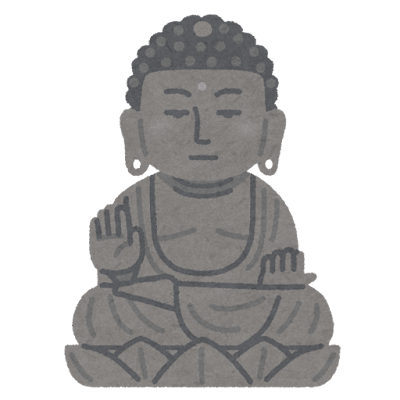
They (or we) believe that praying and chanting lessons can purify souls, promoting calmness and peace.
Indeed. The sutra is quite essential for any Buddhist monk (in Japan). It is why they hit the Mokugyo constantly.
However, the origin was not for the rhythm of concentration. It leads us to the history concerned with the origin.
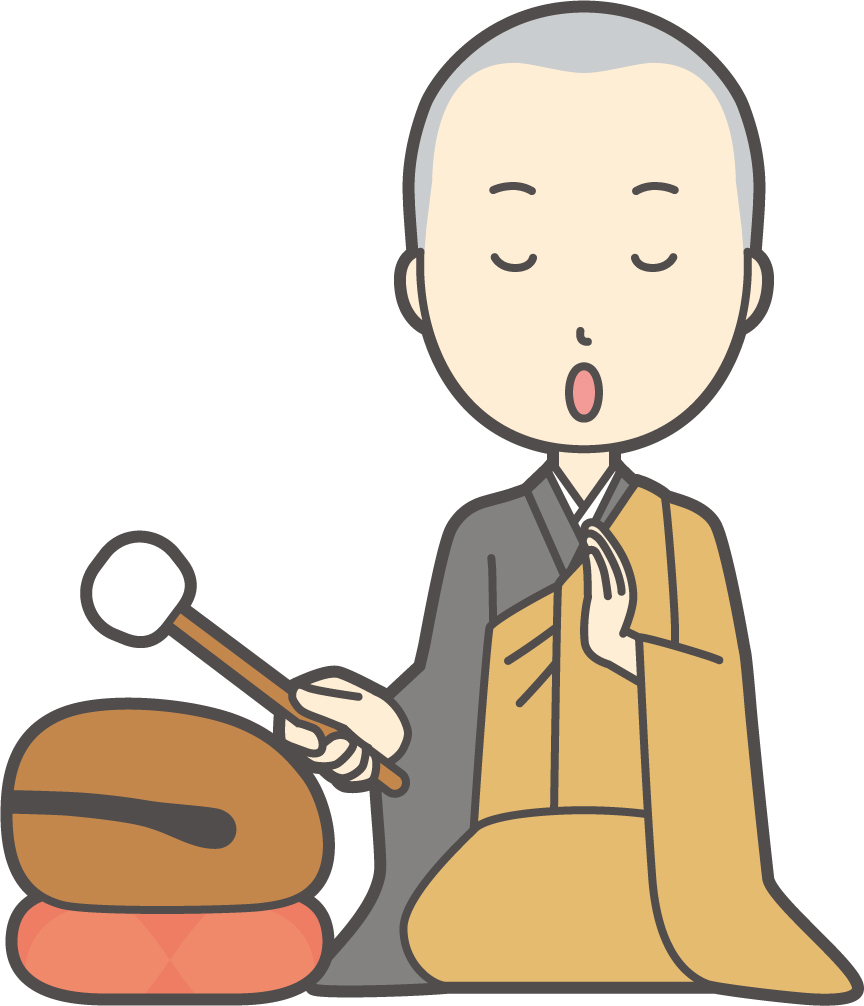
Then, when did it come and where?
The first Mokugyo is surprisingly old. It came from China in the Muromachi era. The era is over six hundred years ago (1336 – 1573).
But it was not for sutra, but the BELL OF TIME.
Besides, the Mokugyo did not have a round shape. It was genuinely similar to the real fish. The ancient monks hung it from the roof and then hit around its stomach with a long stick powerfully (like a piñata) to tell everyone the time.
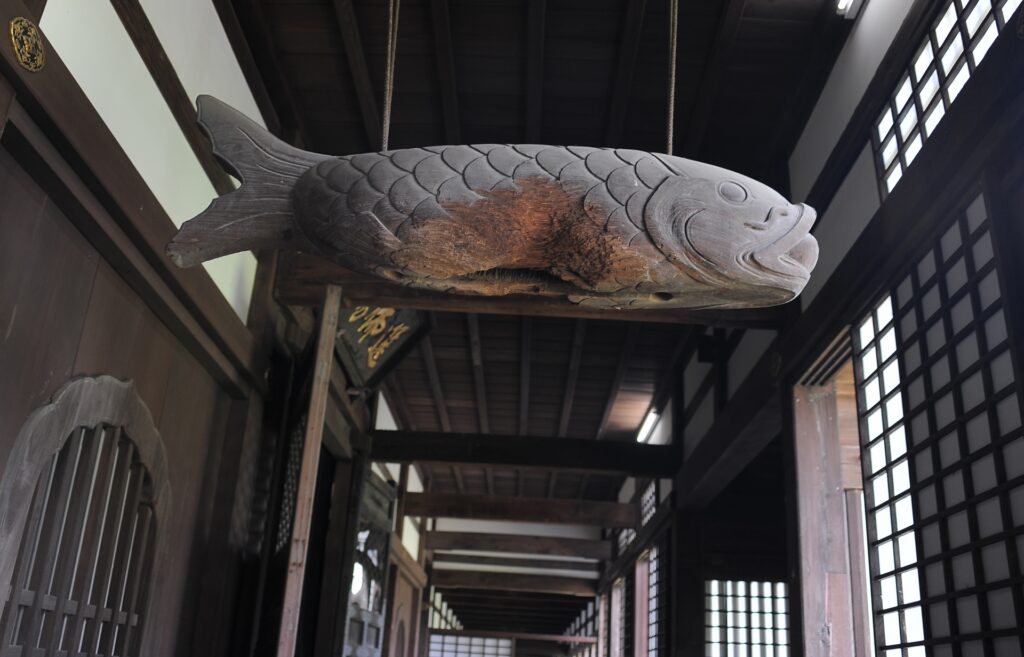
The change occurred during the Edo period, which lasted from 1603 to 1867.
A Buddhist monk from China used the small wooden bell to make a rhythm for concentration while reciting the sutra.
Since then, other monks have mimicked his new attitude.
After the era finished, the shape became round like a ball. It was the Meiji era (1868 – 1912).
Now, it looks far from the real fish. However, the reminder is still on its body.
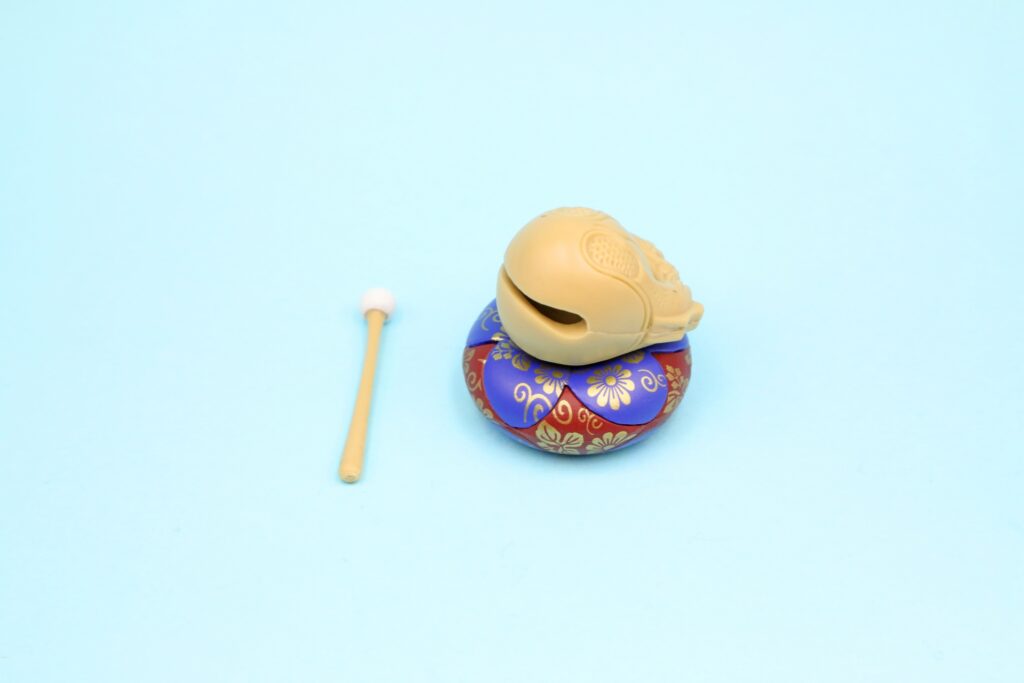
Please look at its tail (or under part). You can see beautiful marks. Those patterns express the fish tail and scales. Some carpenters’ work elevates certain Mokugyo to cultural asset status when it is exceptional.
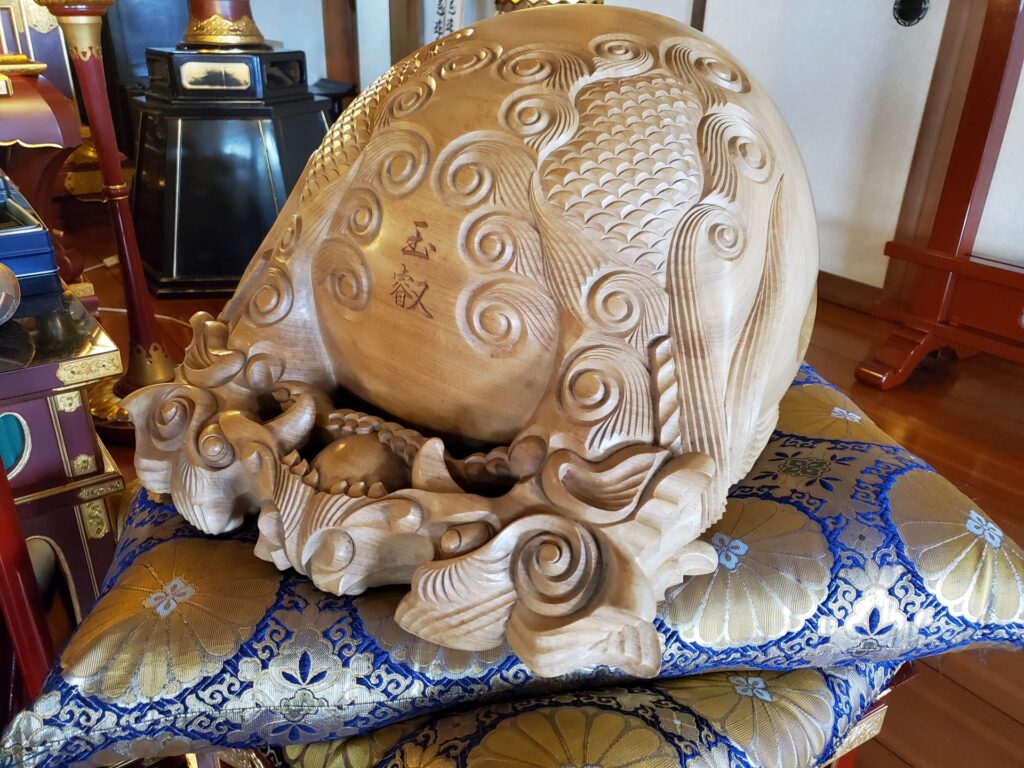
BTW. Why did ancient Buddhist monks appreciate fish?
The answer relies on scientific proof.
Why is it from fish?
As you may know, fish do not have eyelids. They always open their eyes, even when they sleep.
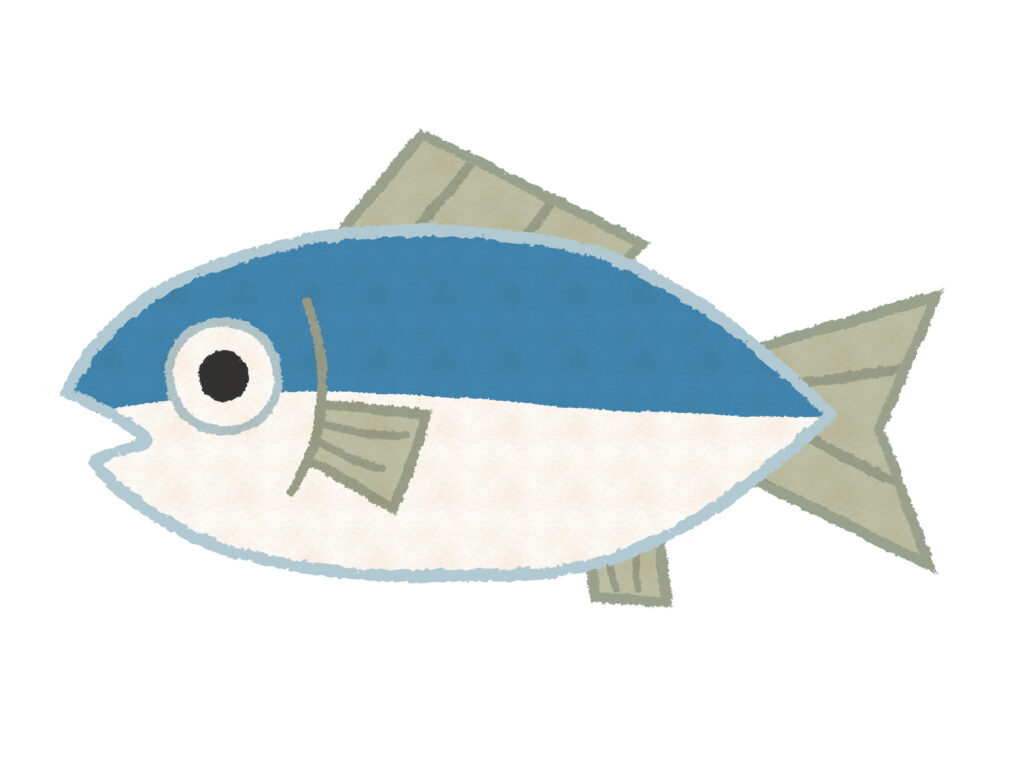
The ancient Buddhist monk thought they were seeing themselves in that, as they trained diligently day and night.
As a result, they considered the fish to be a fitting example of the qualities an apprentice of Buddhism should strive to embody.
It is why the Mokugyo resembles a fish.
To close
It is all today! Thank you for reading this article!
However, it is not yet. We still have more information about Japan. Now, we categorize them into four.
They are the Japanese lifestyle, food, the Edo era, and religions. If you are still interested, please visit those pages!
OK! See you on the next adventure (article)!
